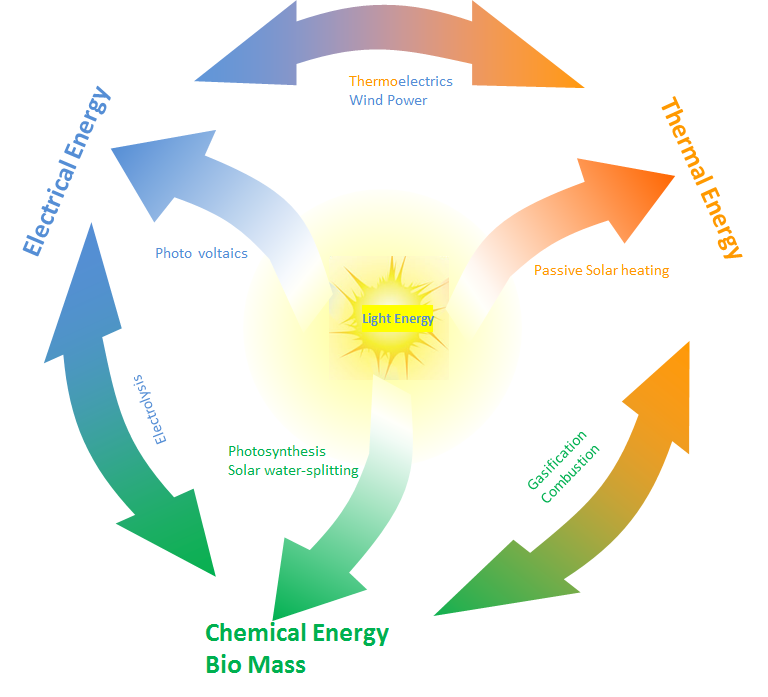EMIL
Energy Conversion
Sunlight is by far the largest sustainable source of energy. Solar energy, therefore, has to play a key role in any conceivable future energy scenario.
- A promising approach to convert sunlight to renewable energy sources is through the production of solar fuels. Solar fuel is produced from sunlight by solar energy being transformed into chemical energy. Solar fuels include hydrogen produced by water splitting or products from CO2 reduction such as CO and methane (CH4). The production of solar fuel requires advanced catalytic processes. In this context water electrolysis is a very important reaction.
- One of the most advanced technology is the direct conversion of sunlight to electricity using photovoltaic devices. Next generation photovoltaic (PV) technologies must sustain TW scale production and therefore require widely-available, environmentally-friendly base materials combined with highest conversion efficiencies at the lowest possible cost.
- Thermoelectric devices convert thermal energy into electrical energy. Excess heat such as heat created by combustion engines or waste heat of power plants could thus be converted into electricity.
- In nature, energy converting biomaterials are able to carry out remarkable chemical transformations with an unmatched efficiency. Driven by a desire to use nature as an inspiration for rational catalysis design.

